François LINKE (1855-1946) was undoubtedly the most important Parisian cabinetmaker of his time. First an apprentice in his hometown of Pankraz in Bohemia, Linke arrived in Paris in 1875 and founded his own studio in 1881 at 170 rue du Faubourg Saint-Antoine. Around 1900, he was at the head of a veritable company of ninety workers. If François Linke had, at his beginnings, a private clientele (Mr Worms, Mr Rolin) and sometimes even renowned like Mr Anatole Beaumetz, brother-in-law of the Minister of Arts, he had for many years to work in the shadow of houses renowned cabinetmaking. This is why most of his "early" works will not only not be signed so as not to disclose to the clients of these houses the origin of their furniture but may bear stamps other than that of F. Linke. By 1900 his reputation as one of the great masters of high quality furniture was made. However, it was his participation in the Universal Exhibition in Paris in 1900 that marked the peak of his career. In a setting of furnished rooms, Linke exhibited a set of extraordinary pieces including a Grand Bureau which won him the gold medal. his talent and creativity remaining unmatched: the Exhibition crowned his success and strengthened the financial stability of his company. This success with both critics and his customers, he owes to an irreproachable manufacturing technique, in accordance with the great tradition of French cabinetmaking of which he is the worthy heir. Like his contemporaries such as Beurdeley and Dasson, his production included copies and pastiches inspired by successive styles of the eighteenth century or the most famous royal furniture, Linke reproduces some faithfully, for others he adopts more sinuous shapes with a surplus of bronzes but was also illustrated in the design of exuberant works, mixing the Louis XV (Rococo) style with Art Nouveau, giving them great originality. Linke owes a lot in this to his fruitful collaboration with the famous sculptor Léon Messagé. The immense international success encountered by Linke at the 1900 exhibition gave him great financial stability, allowing him to settle in huge apartments (a showroom) on the prestigious Place Vendôme, but also to explore new markets often. distant by participating in numerous international exhibitions. In 1904 he became an Officer of Public Instruction, and participated in the St. Louis Exposition in the United States. In 1905 he was appointed juror of the Liège Exhibition and, on October 11, 1906, received the Legion of Honor. He thus became the supplier of the largest families around the world. Linke furnished the residences of rulers such as King Fouad I of Egypt (François Linke made more than 1,200 pieces of furniture and works of art for the King of Egypt according to his records), billionaires such as Raphael de Lamar in New York , the Bolivian king of tin, Simon Patino or Count Devoto. it will experience growing success until World War II. The Transition style covers the period from 1750 to 1774 and denotes the stylistic evolution which, in the second half of the reign of Louis XV and the beginning of the reign of Louis XVI, is characterized by the abandonment of Rocaille curves and extravagances in favor of of straight lines, symmetry and harmonious proportions. The transition from Louis XV style to Louis XVI style is done gradually. Initially, Louis XV ornaments and forms are juxtaposed with neoclassical ones, inspired by Greek models.
Later, under the reign of Louis XVI (1774-1793), only the attributes of antique inspiration are preserved, giving birth to the neoclassical style.This evolution of taste in the mid-18th century is linked to the vogue of archeology, conceived by the discoveries of the cities of Herculaneum (1748) and Pompeii (1752). These events give rise to the numerous illustrated works and to the publication of the distribution of engravings, which took place the Greco-Roman reasons and architectural orders, democratizing this new style called style "". Some personalities partisan to the Greek return to Antiquity, such as Madame du Barry, favorite of King Louis XV, helped the development of the Transition style by ordering cabinetmakers "Greek style" furniture for the fitting out of her castle in Louveciennes.


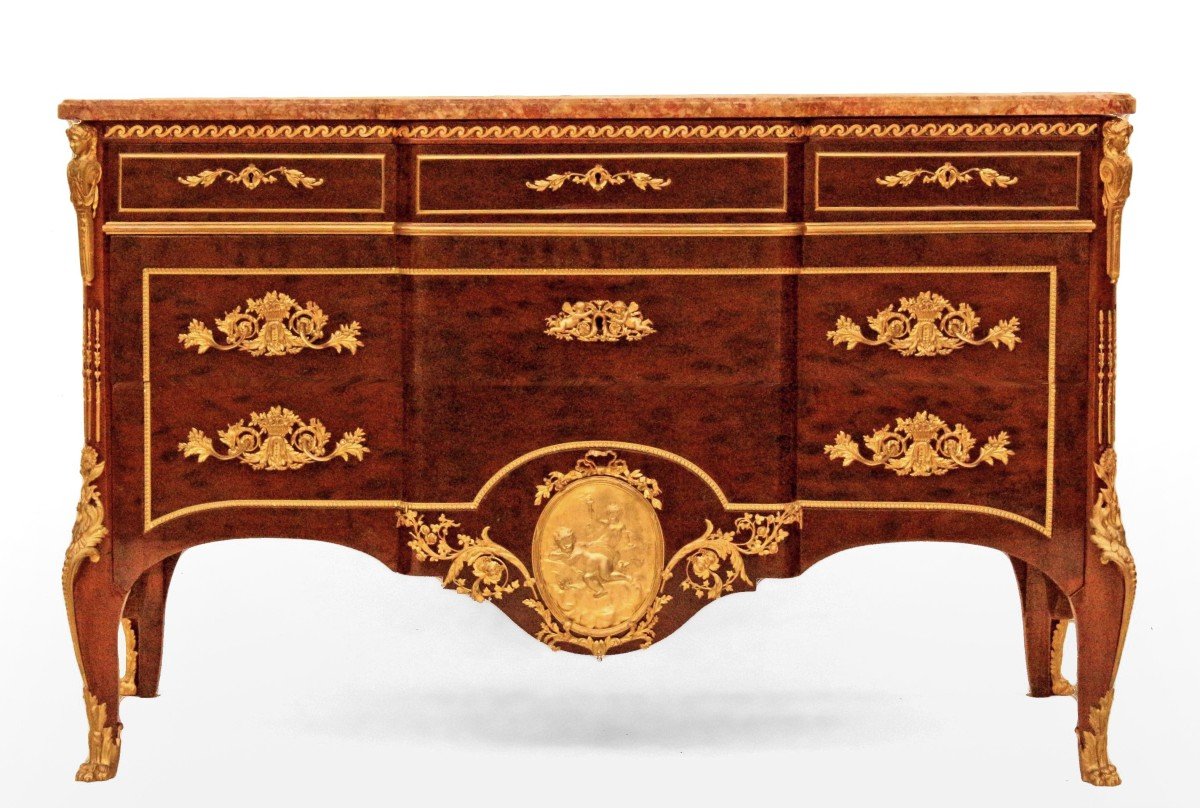
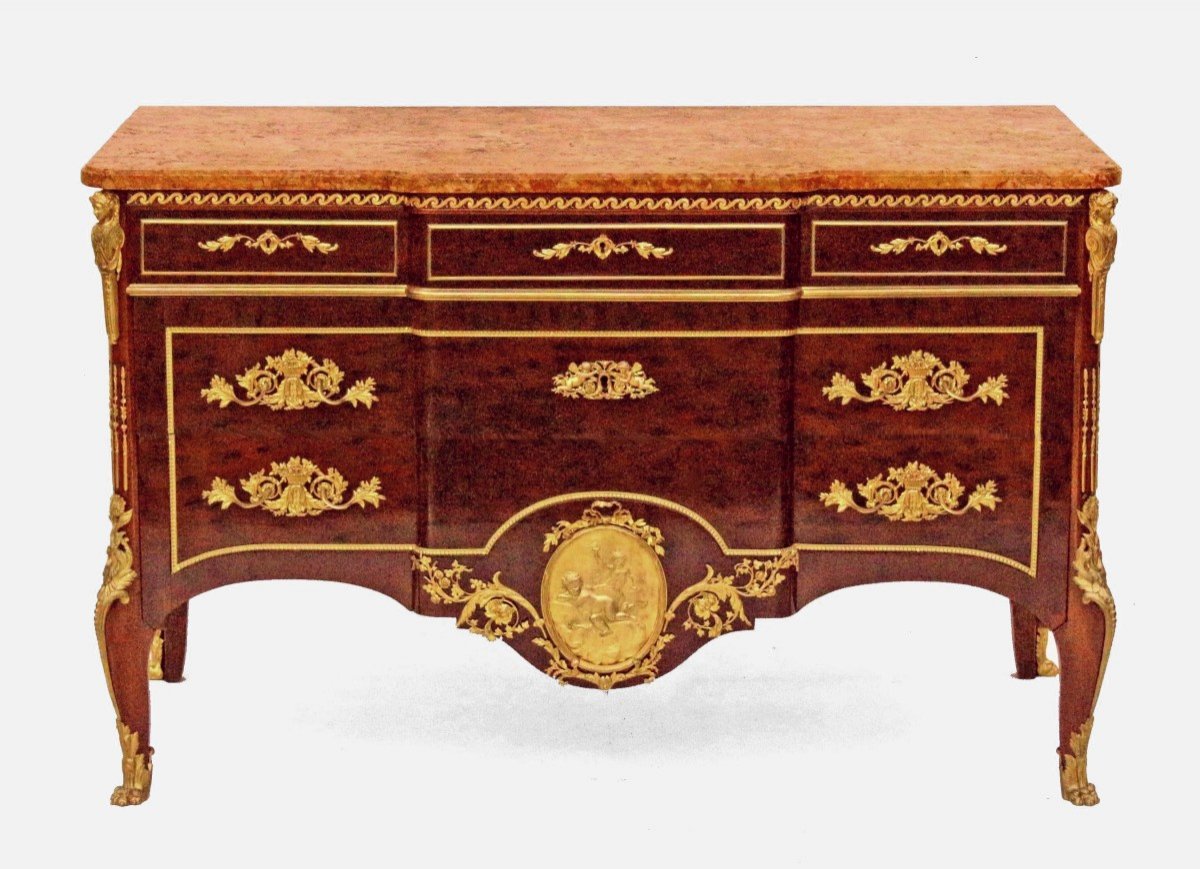
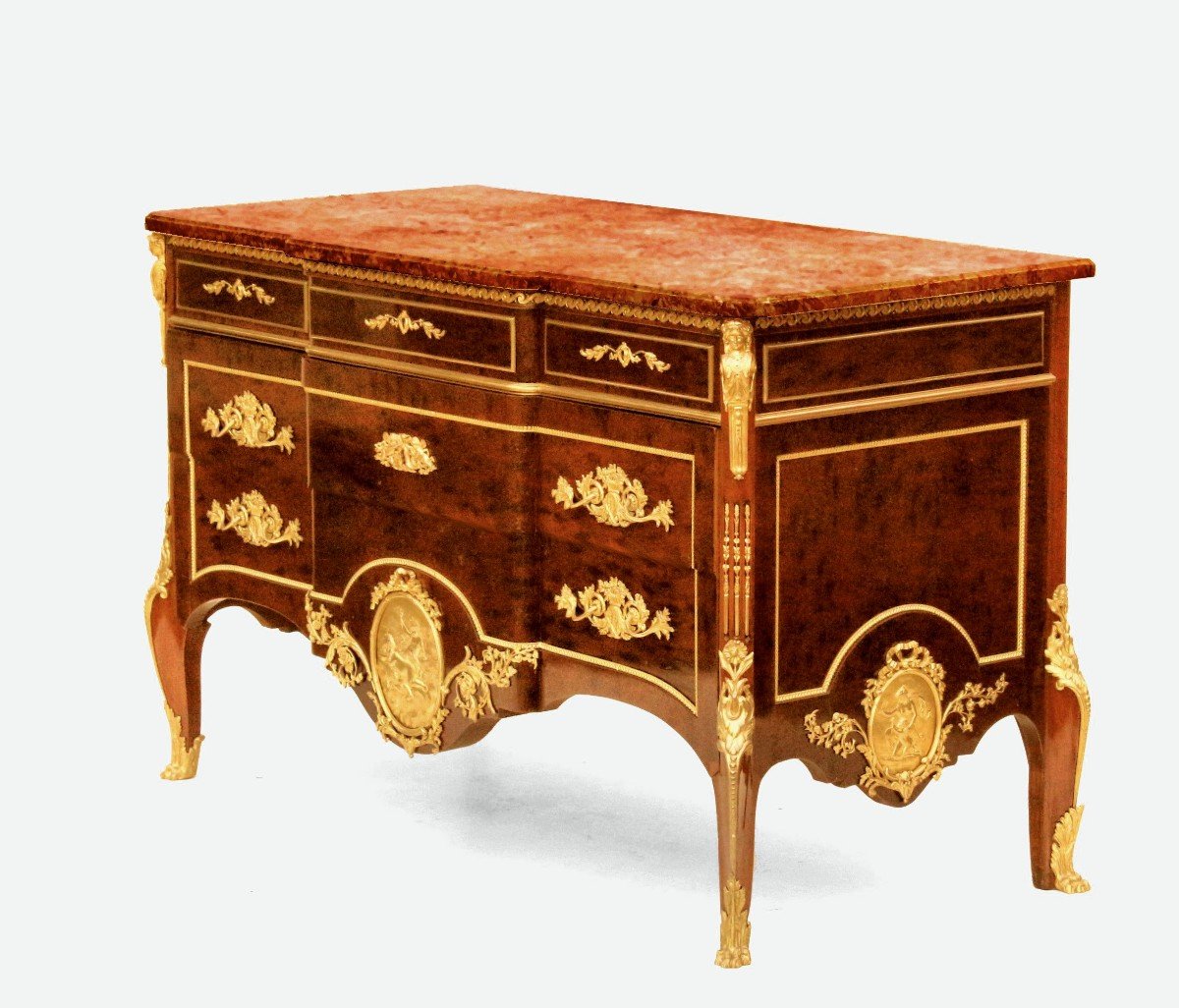
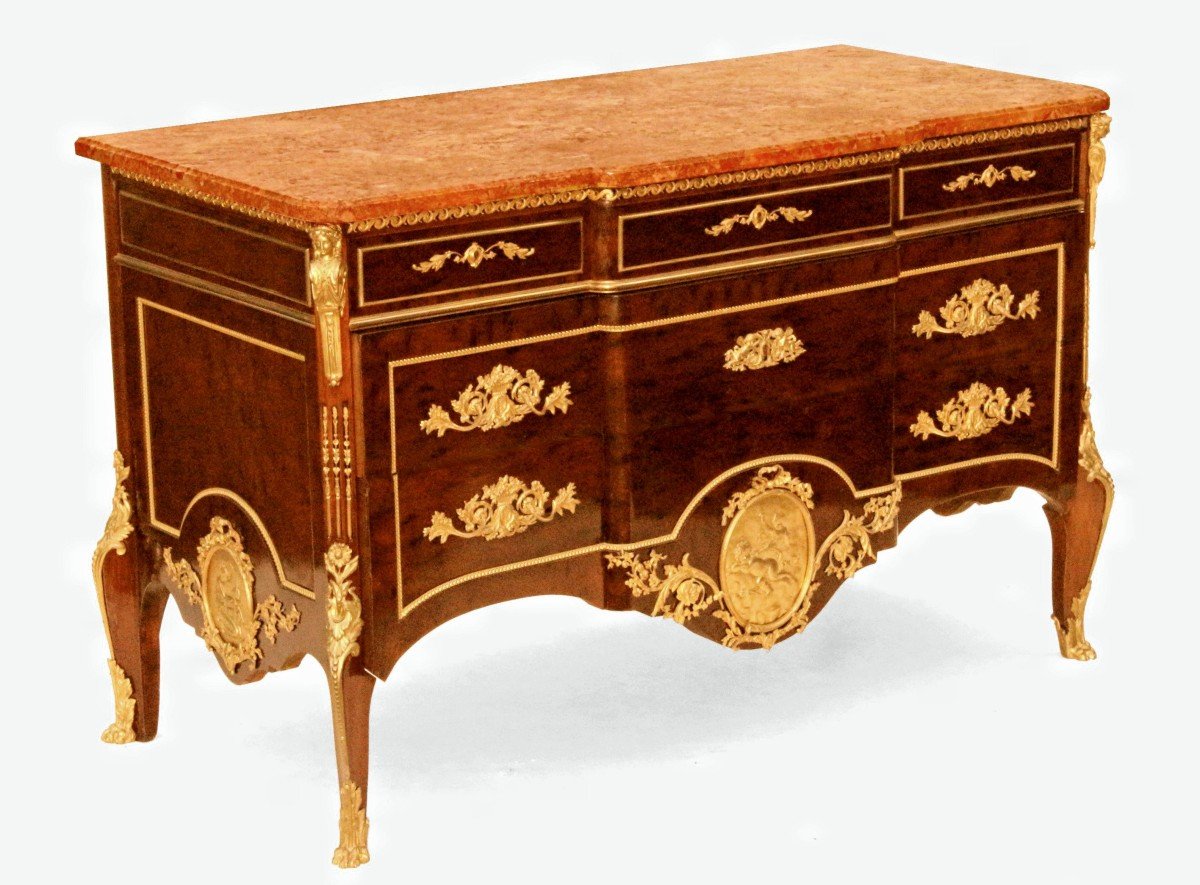
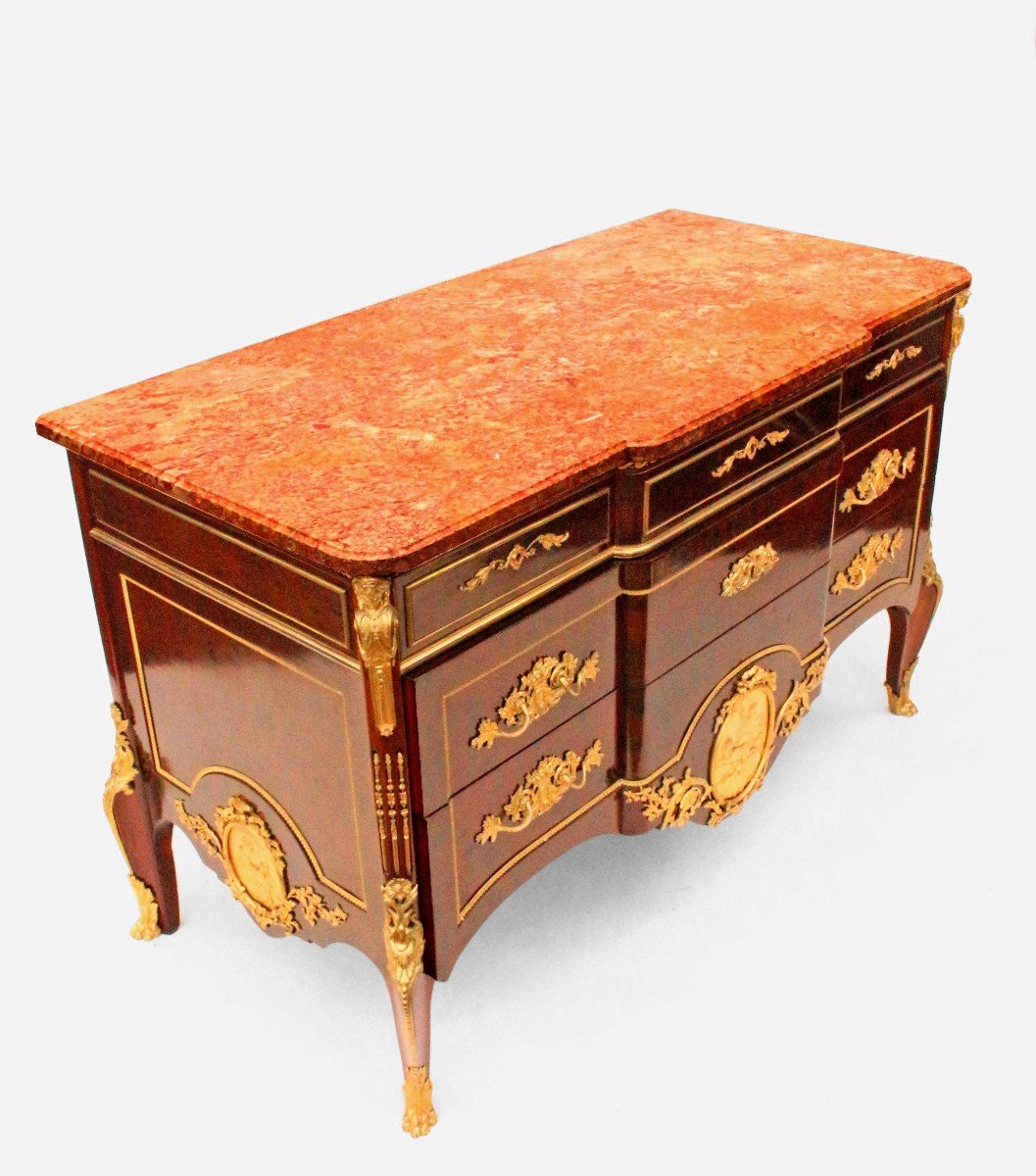
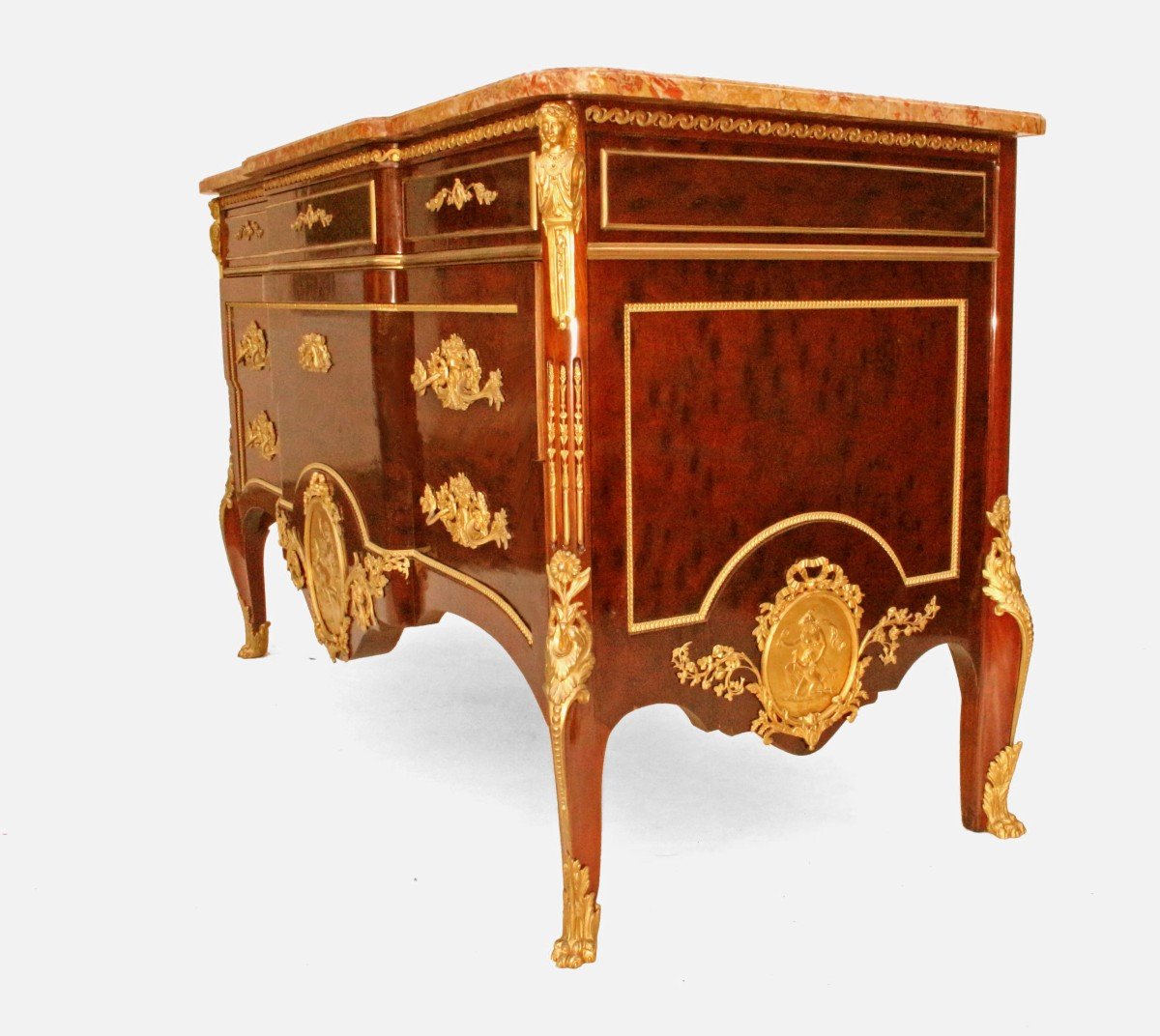
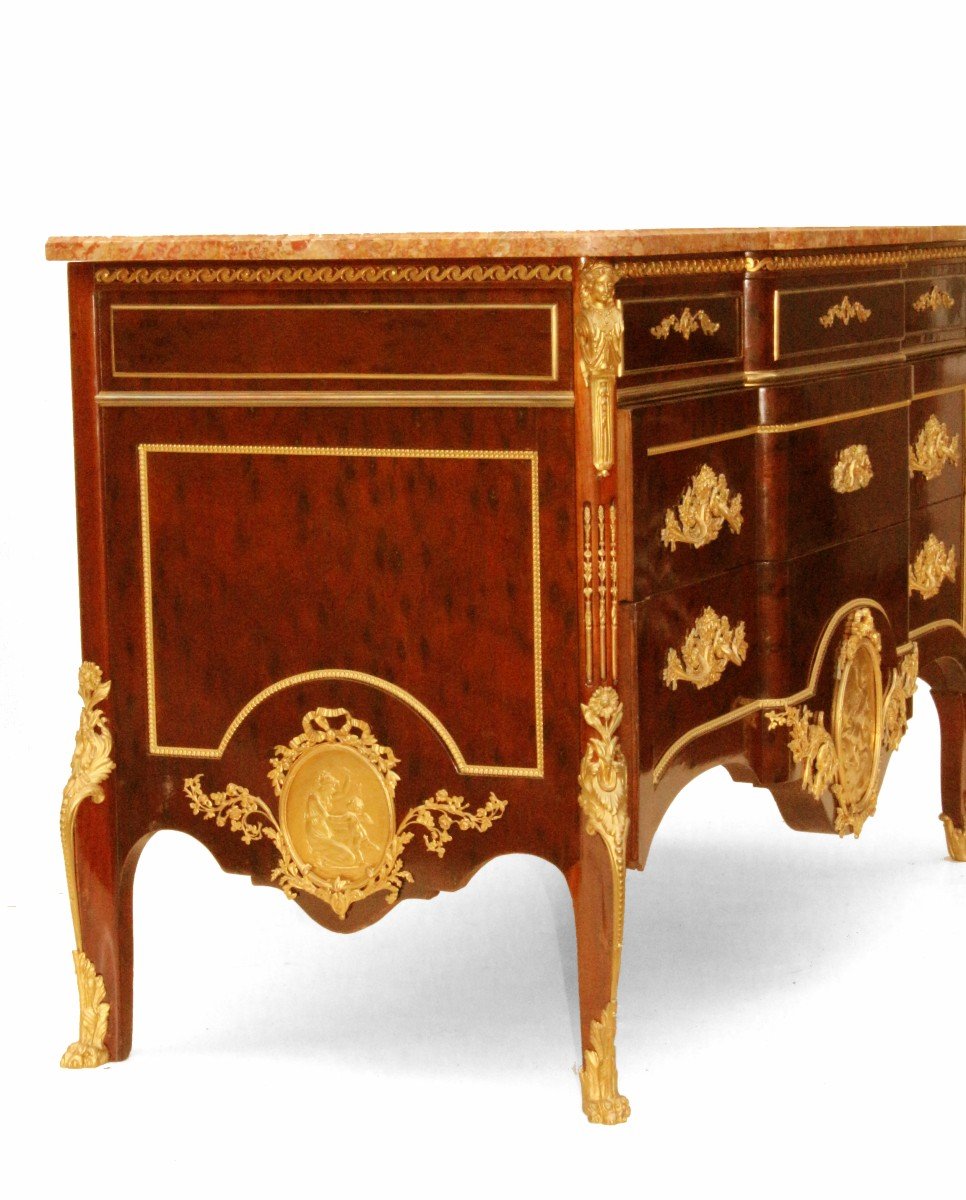
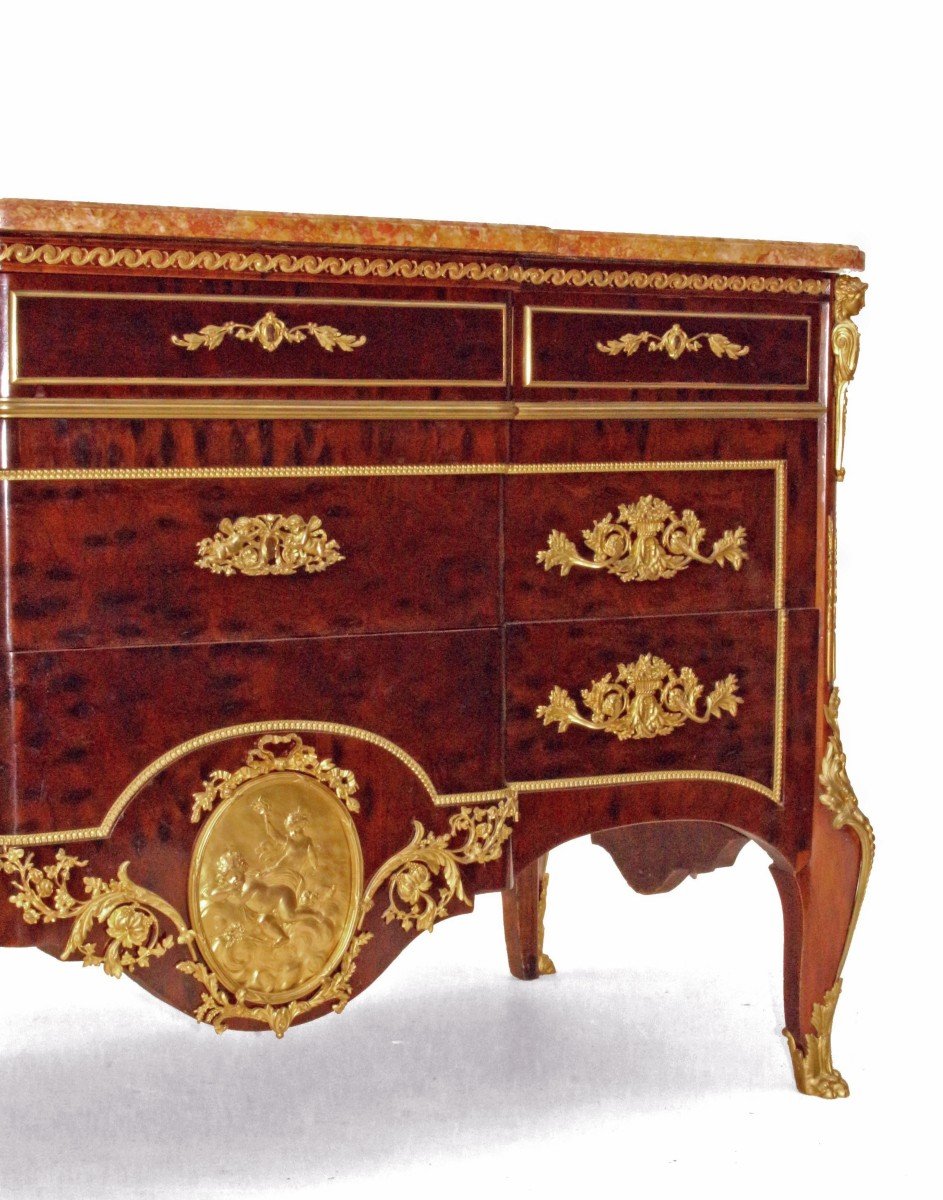
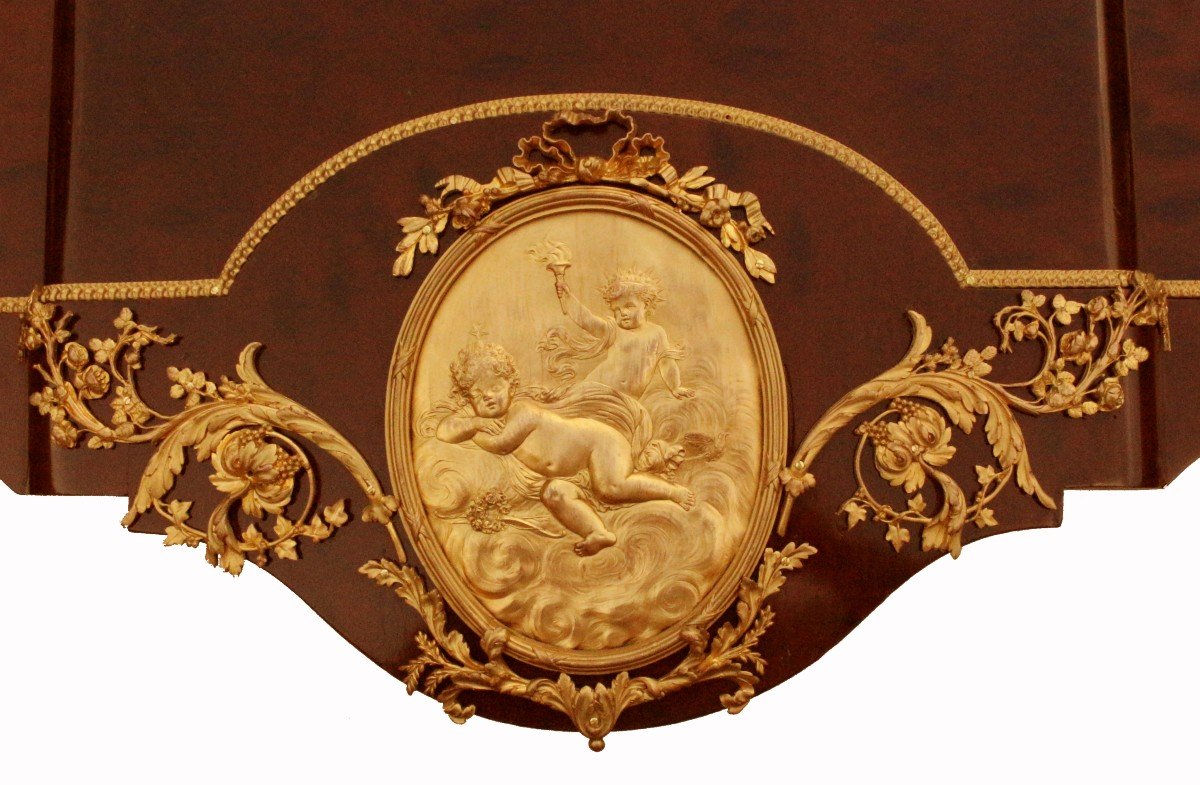
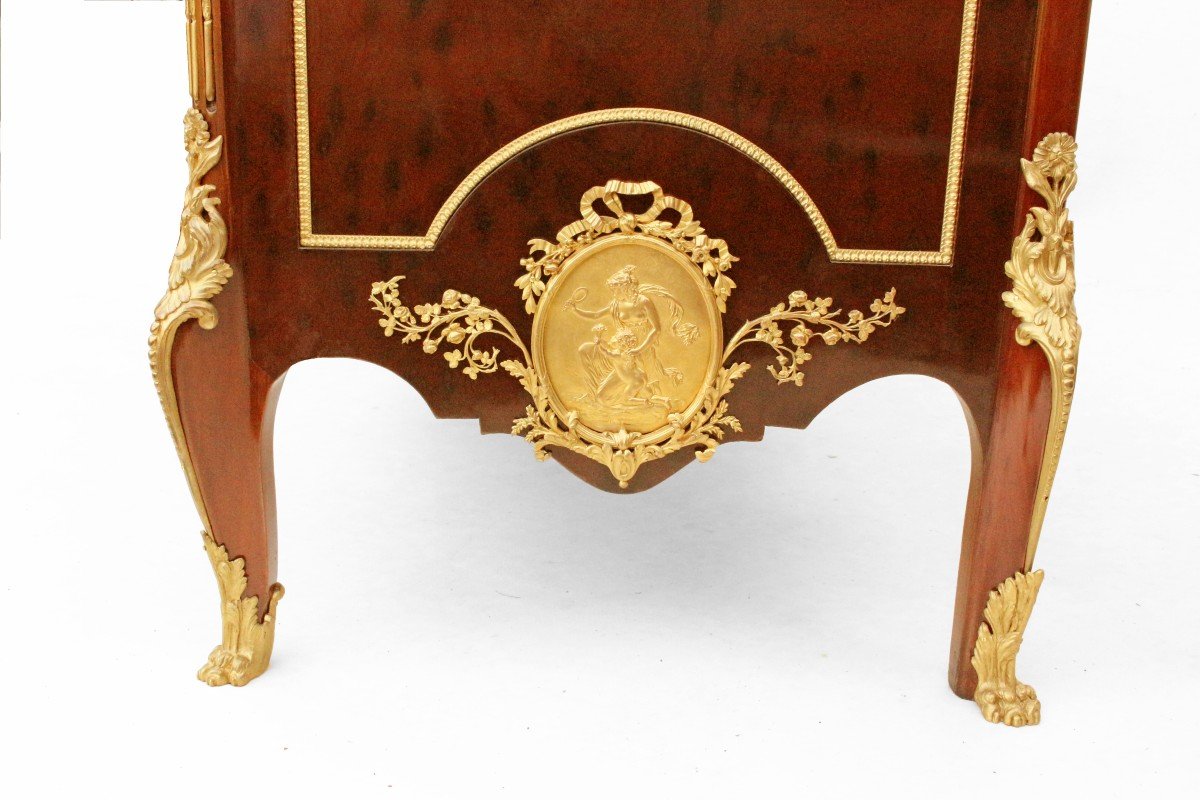
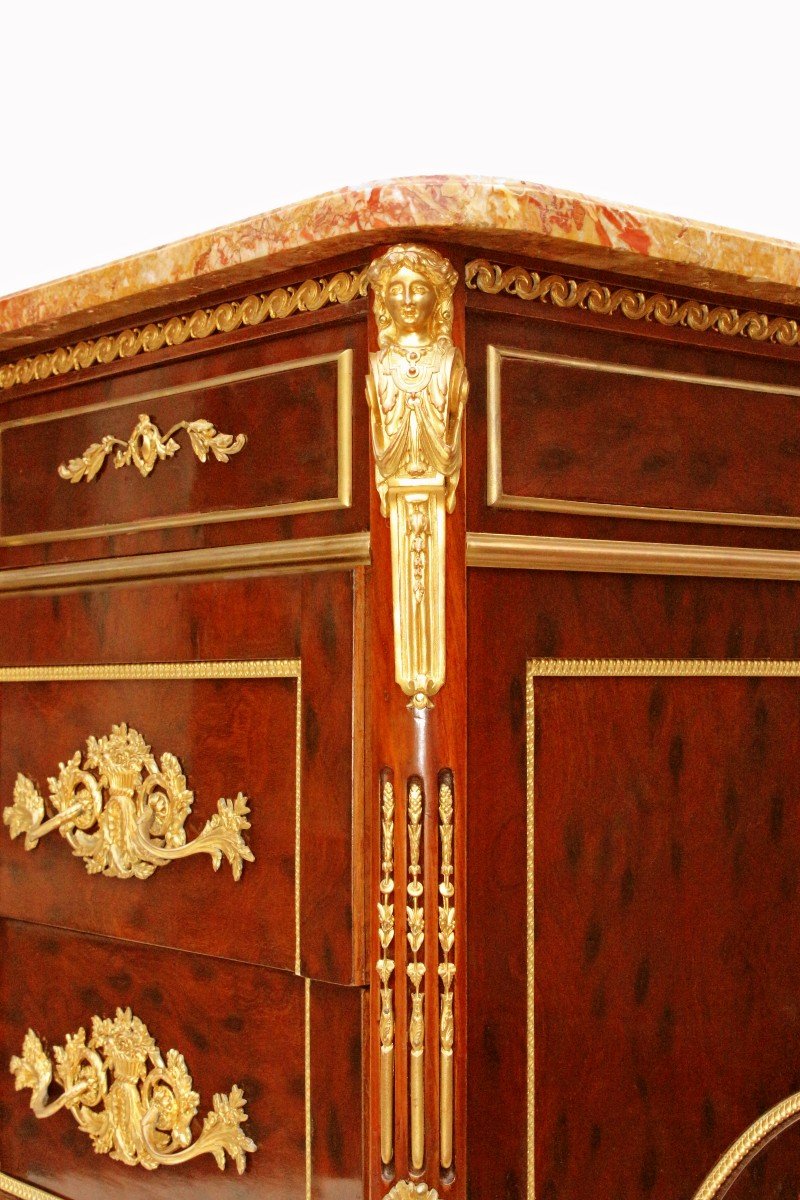
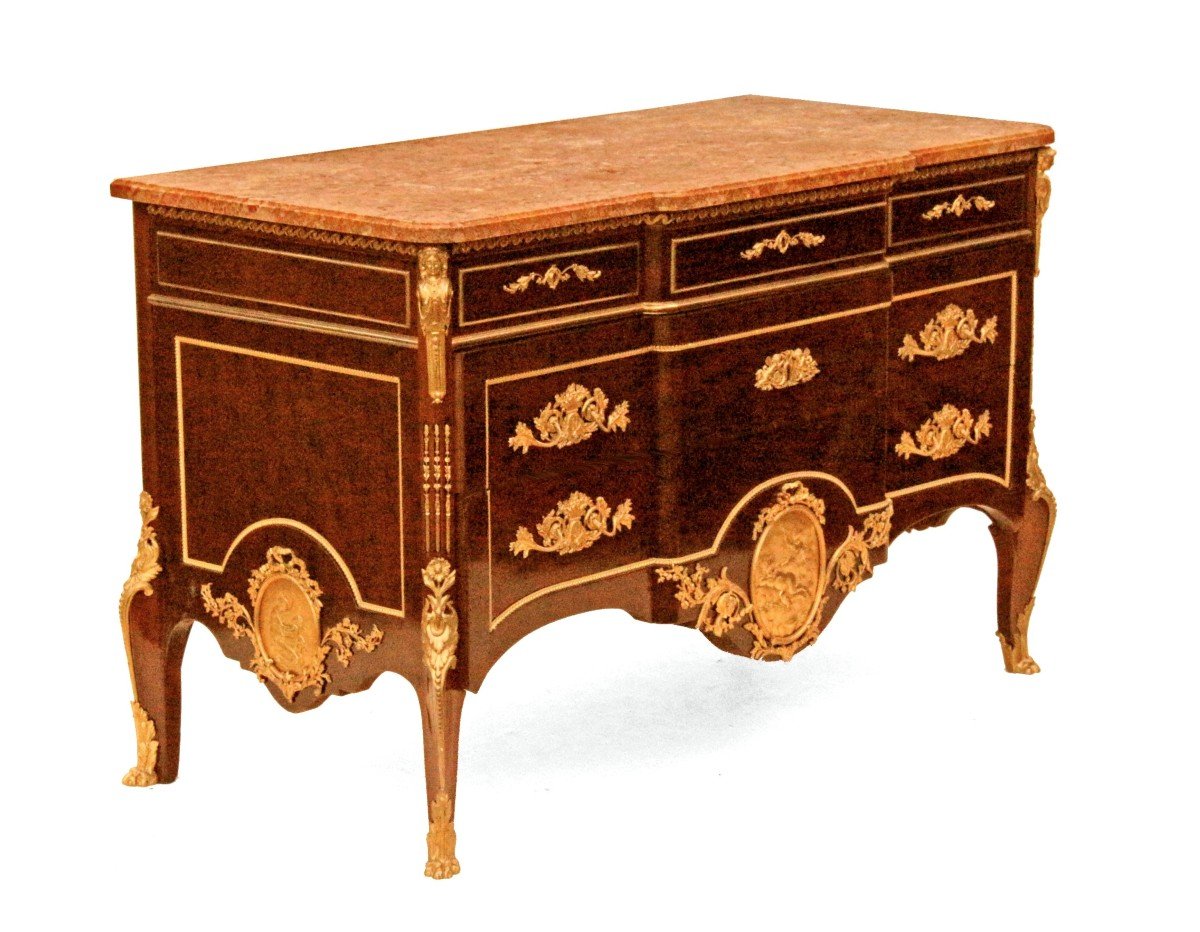














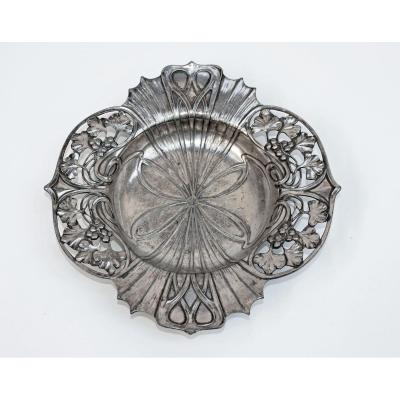






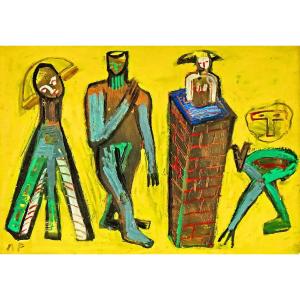
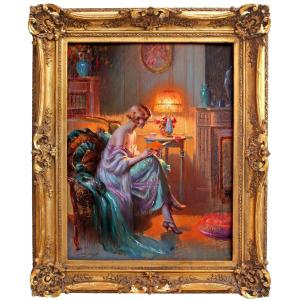
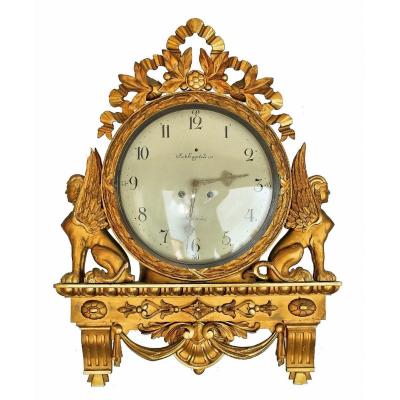




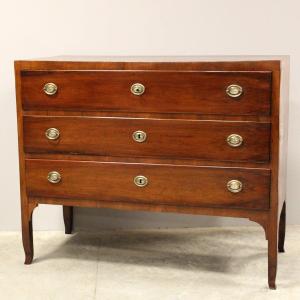
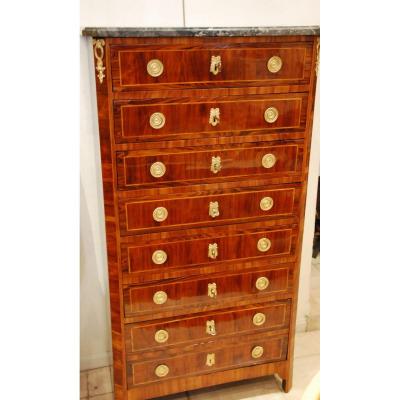


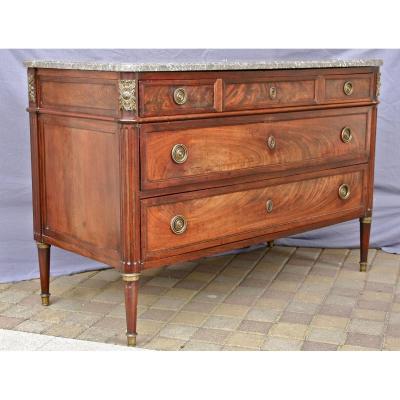



 Le Magazine de PROANTIC
Le Magazine de PROANTIC TRÉSORS Magazine
TRÉSORS Magazine Rivista Artiquariato
Rivista Artiquariato